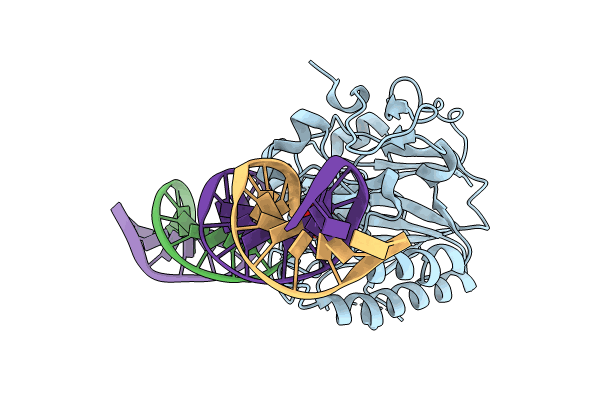
Deposition Date
2023-08-02
Release Date
2024-02-21
Last Version Date
2024-06-19
Entry Detail
PDB ID:
8KA3
Keywords:
Title:
Arabidopsis AP endonuclease ARP complex with 22bp THF-containing DNA
Biological Source:
Source Organism:
Arabidopsis thaliana (Taxon ID: 3702)
synthetic construct (Taxon ID: 32630)
synthetic construct (Taxon ID: 32630)
Host Organism:
Method Details:
Experimental Method:
Resolution:
3.00 Å
R-Value Free:
0.30
R-Value Work:
0.24
R-Value Observed:
0.24
Space Group:
C 1 2 1


